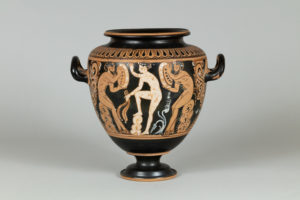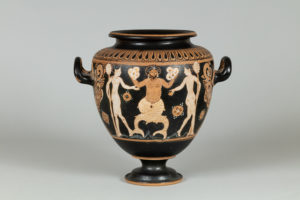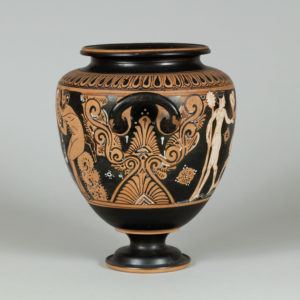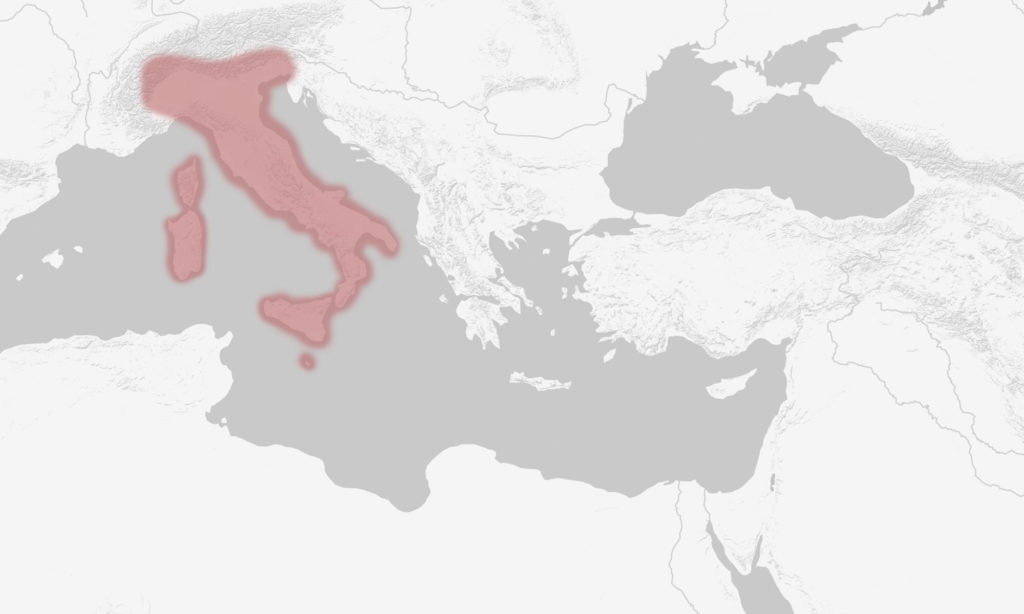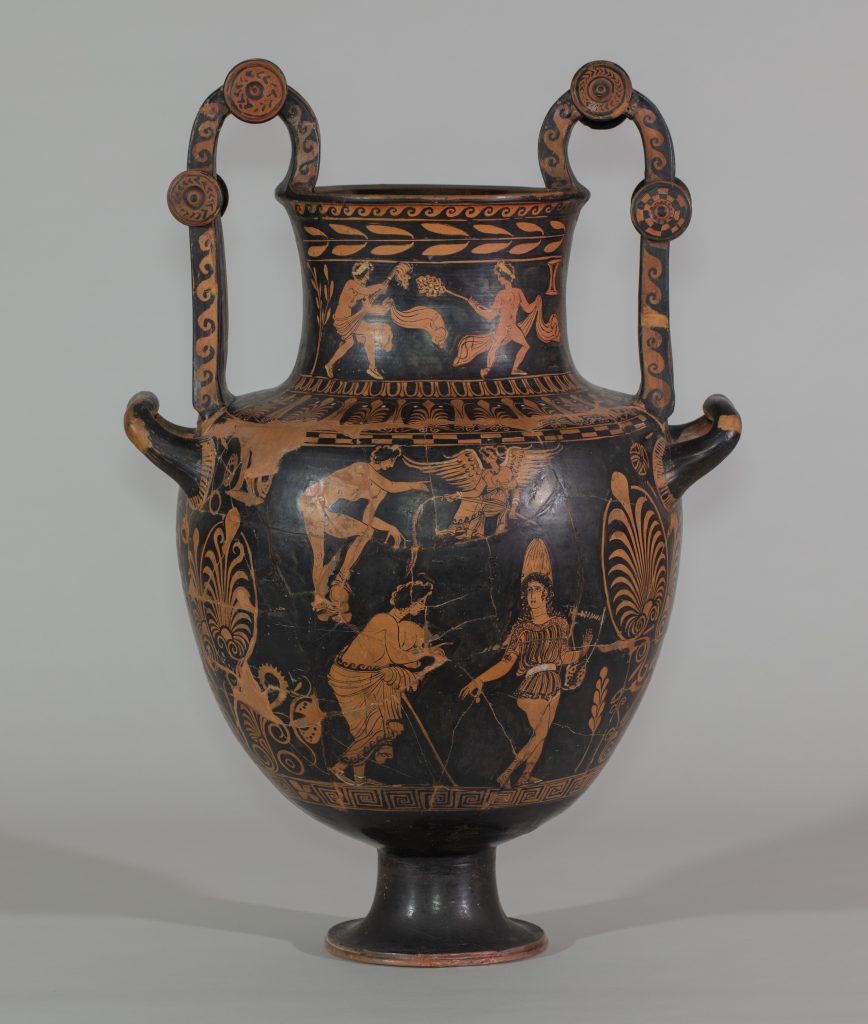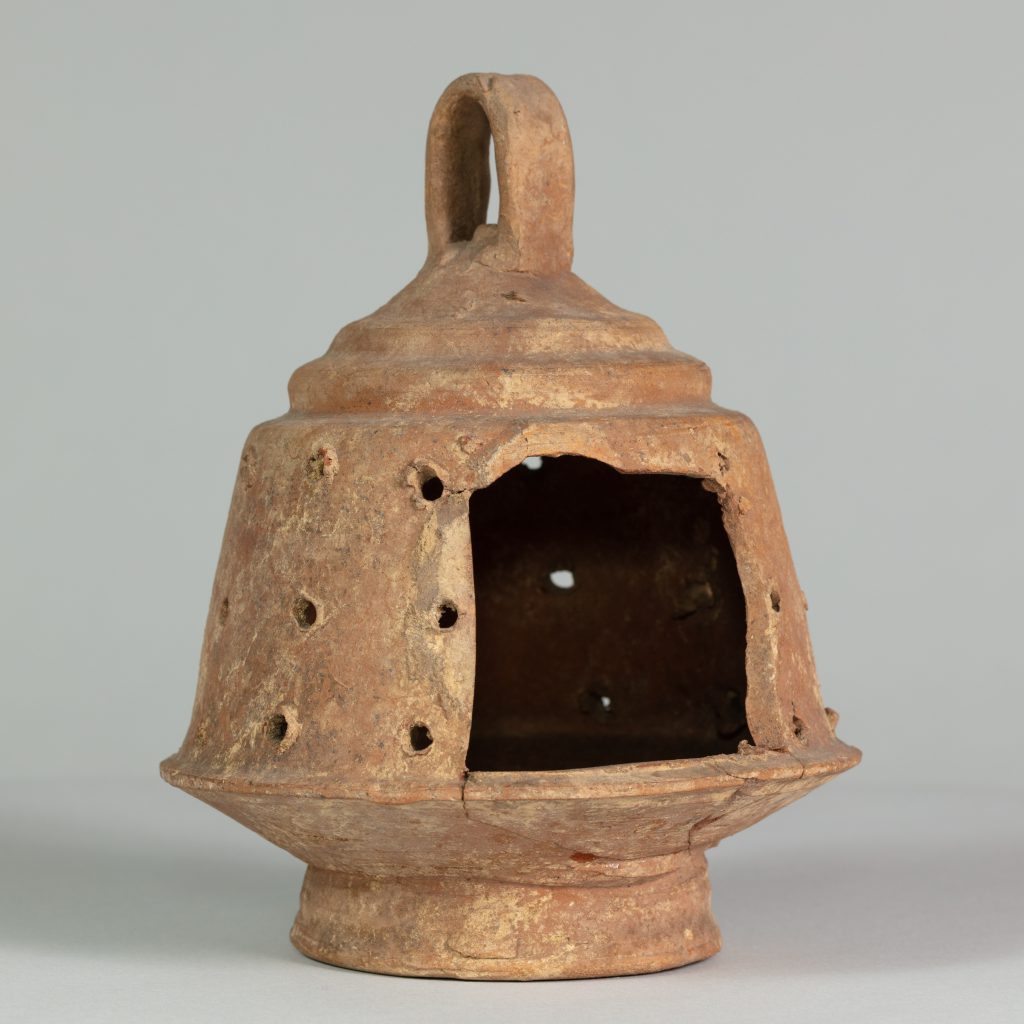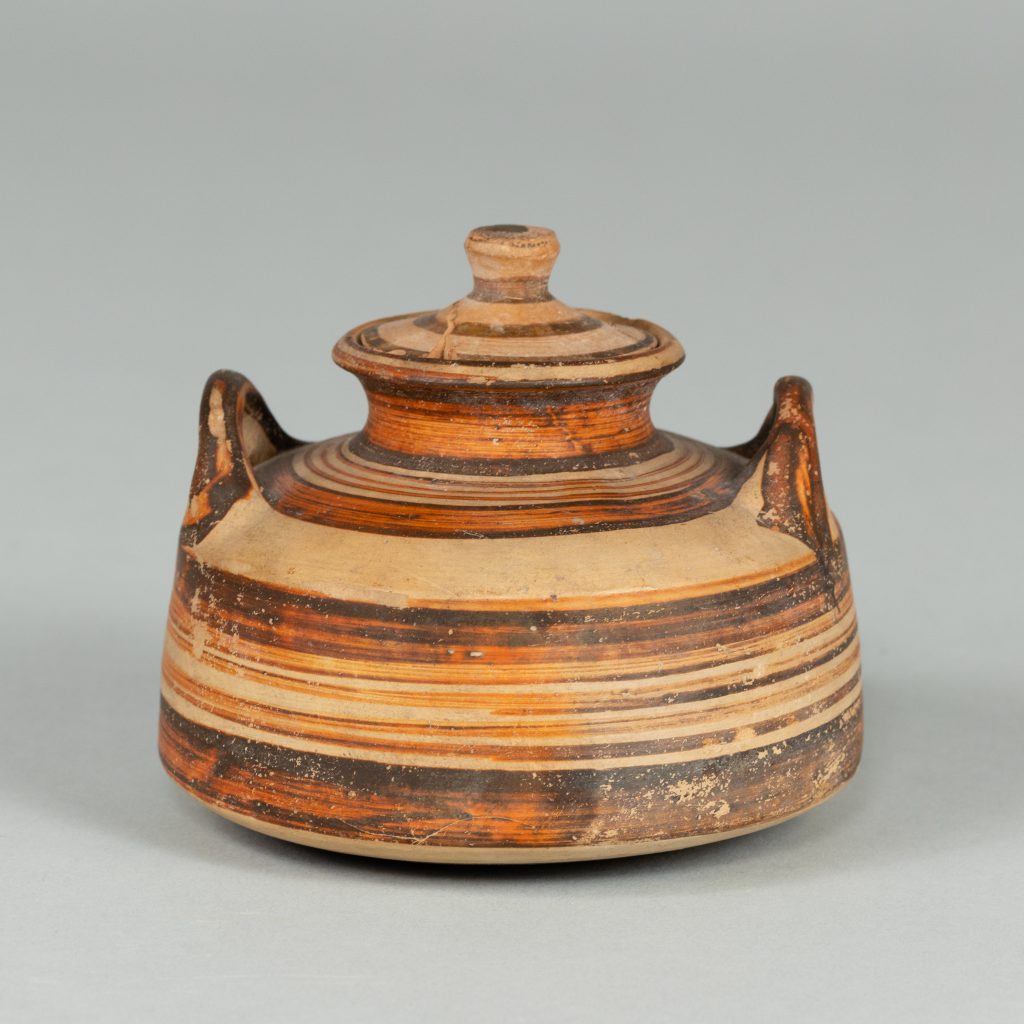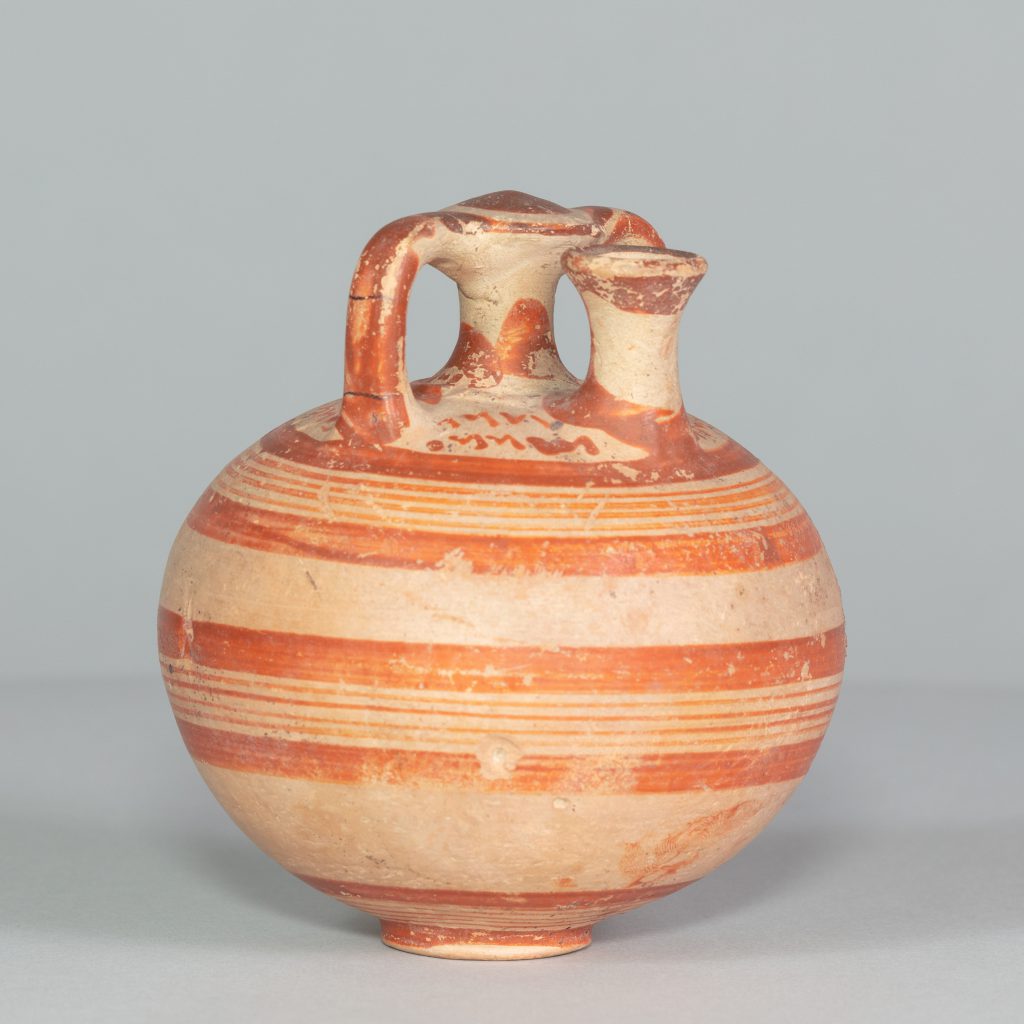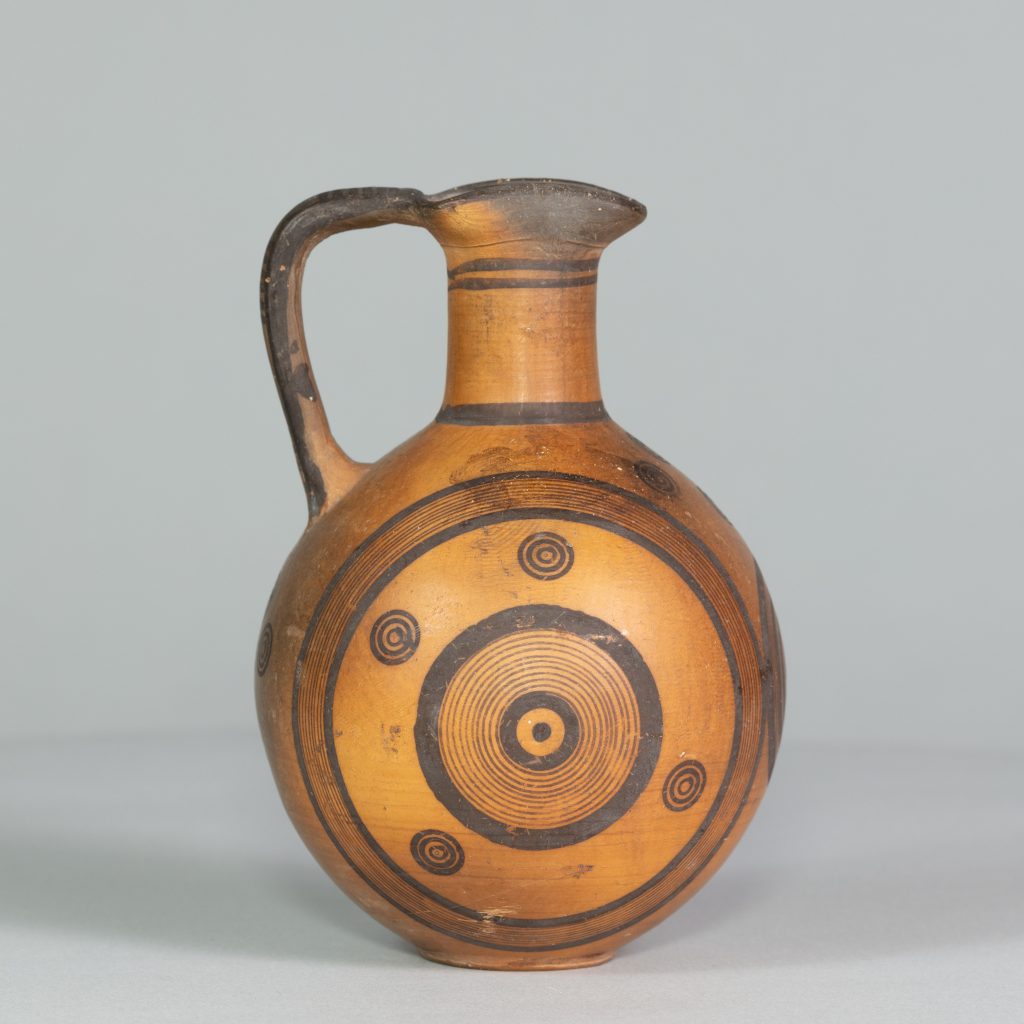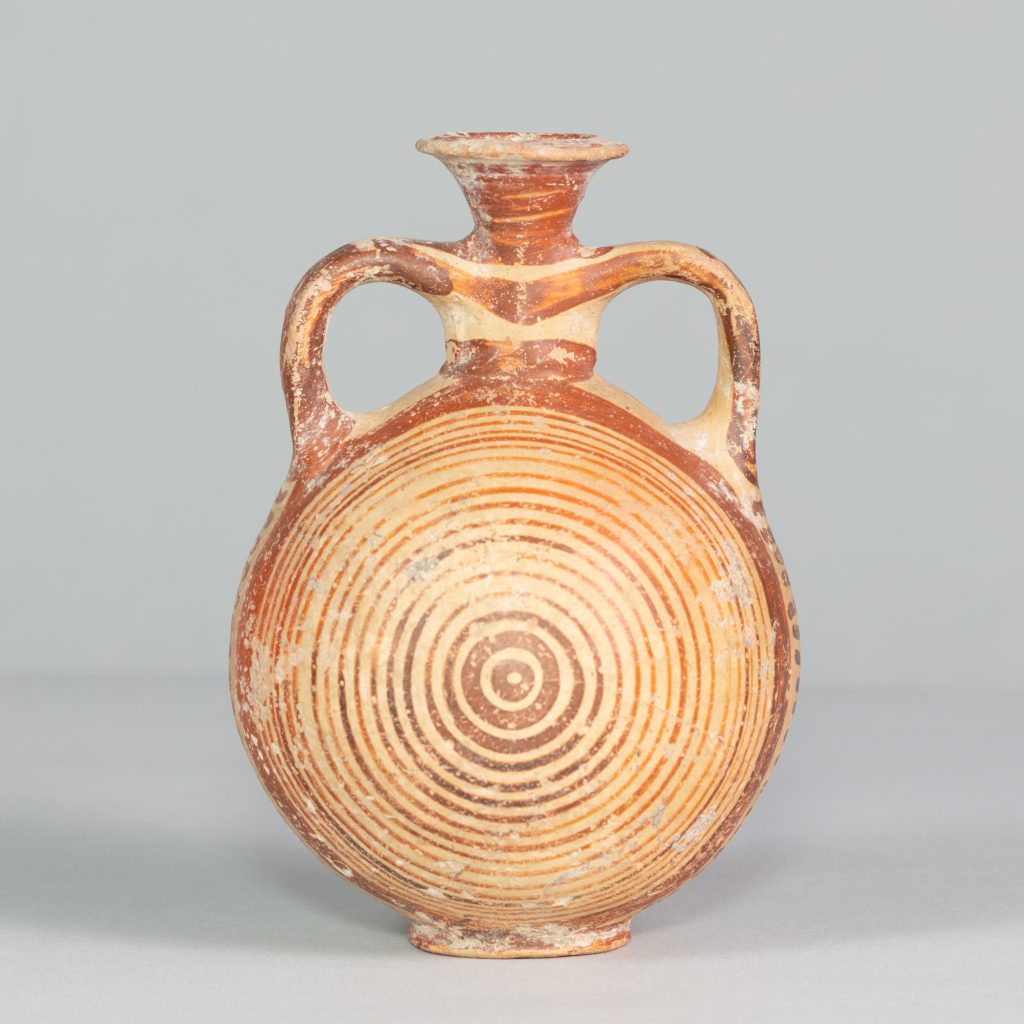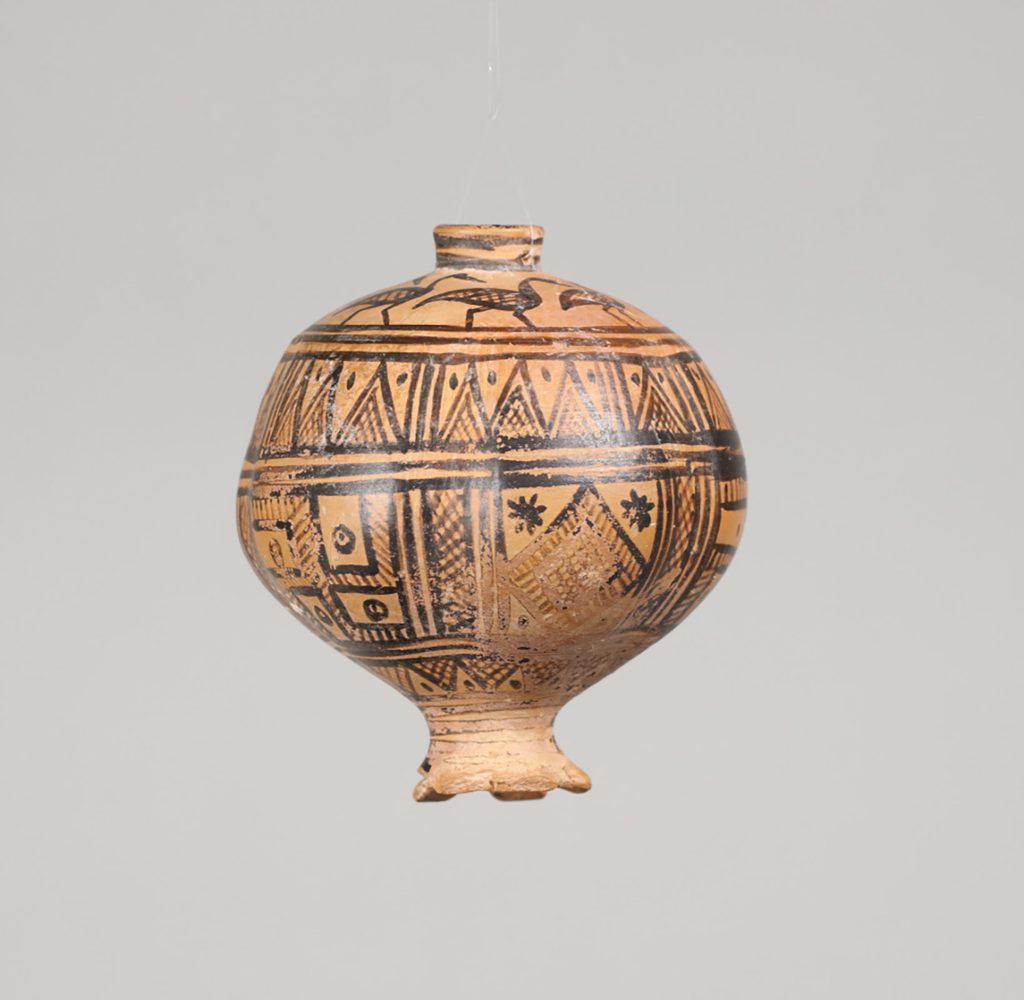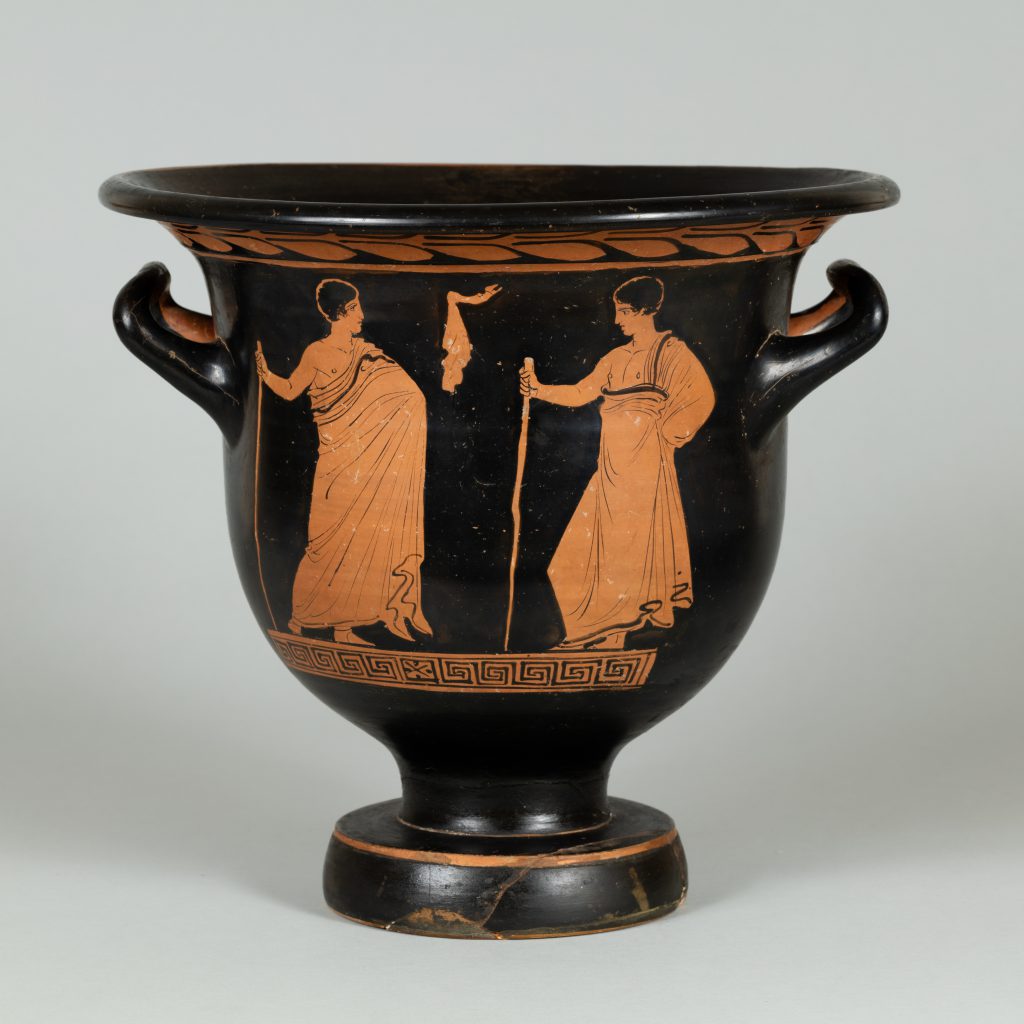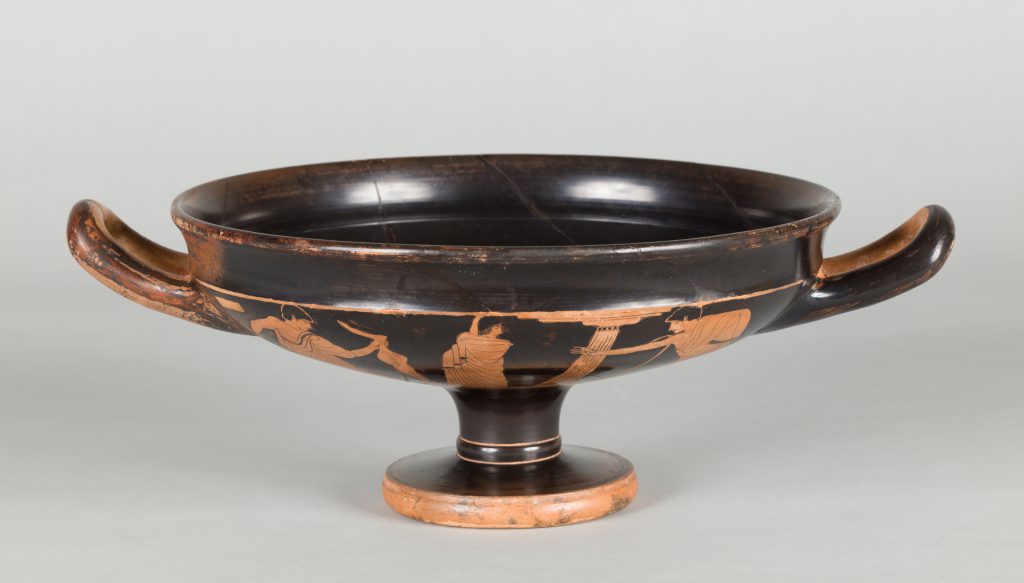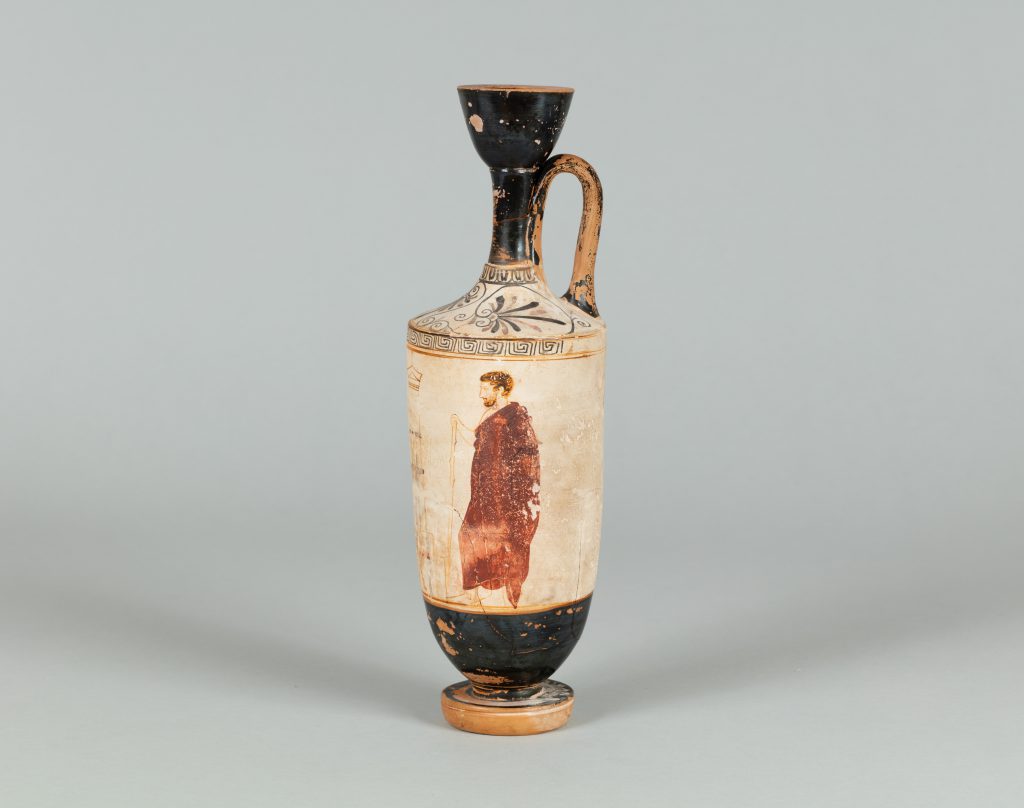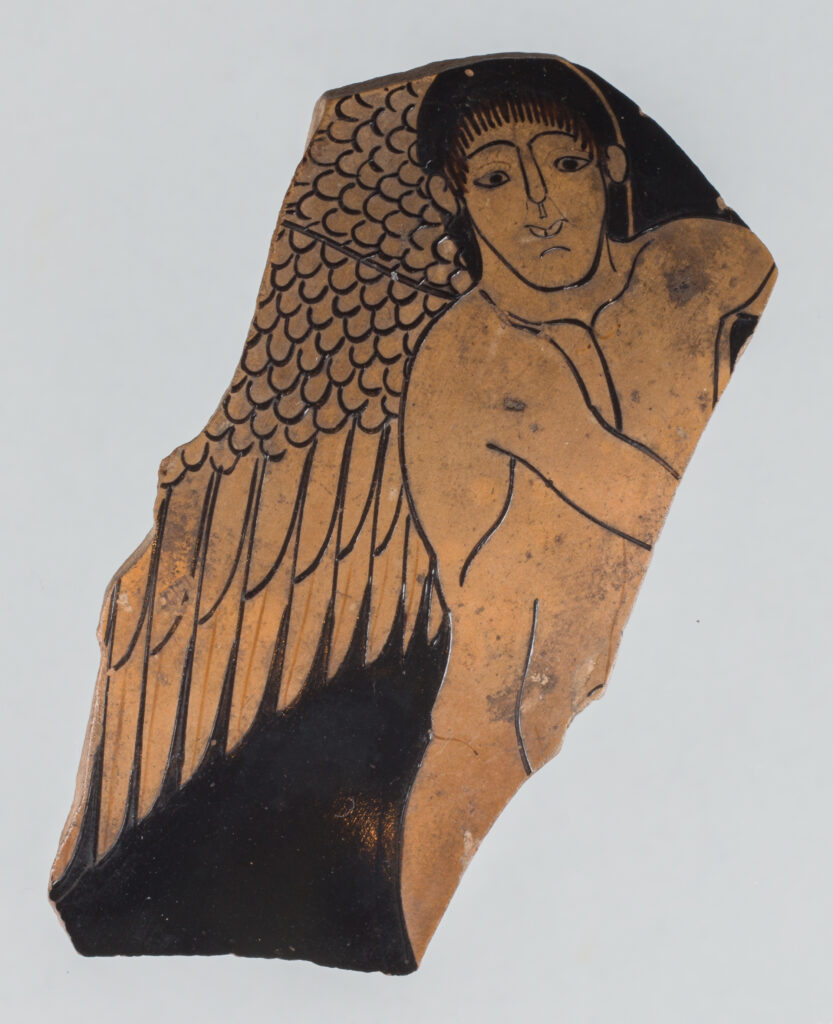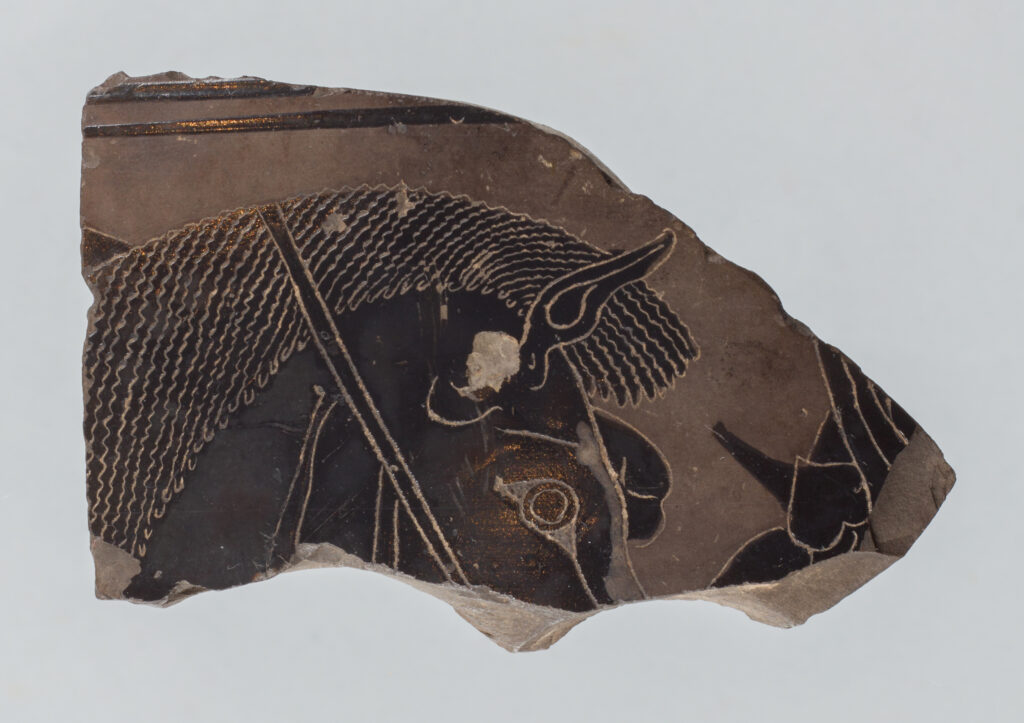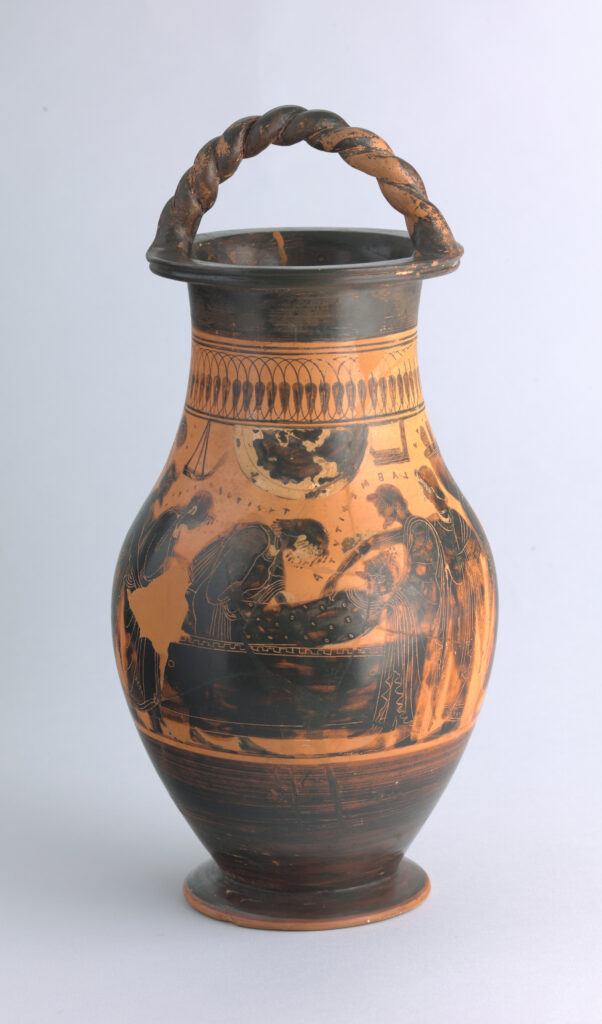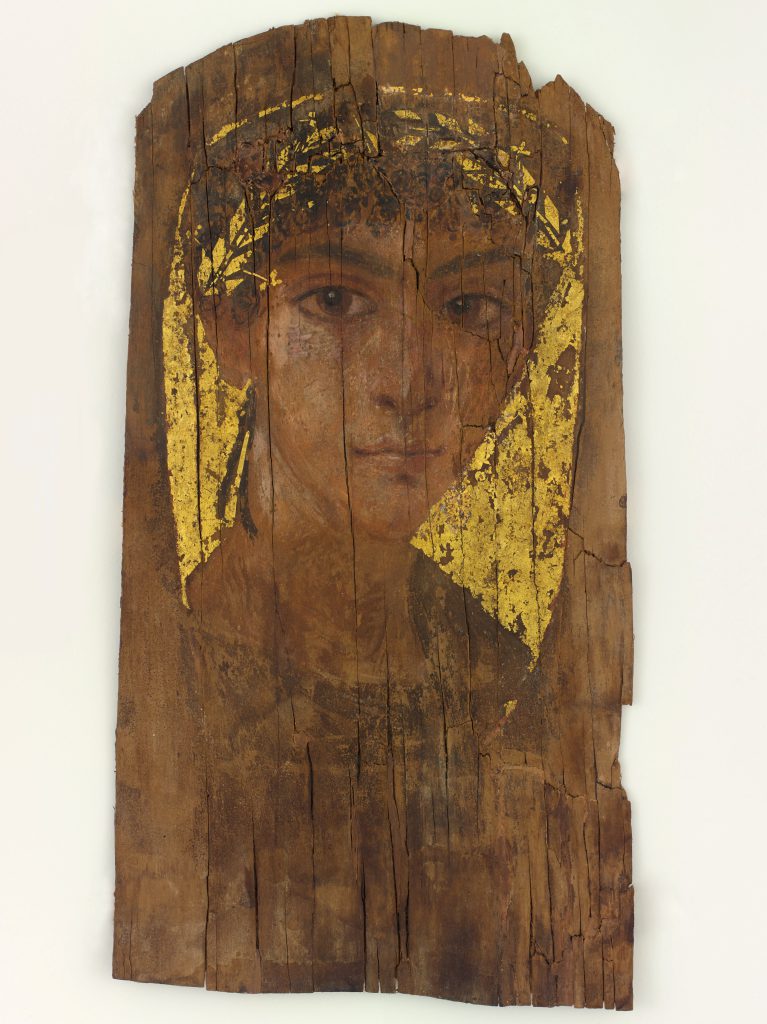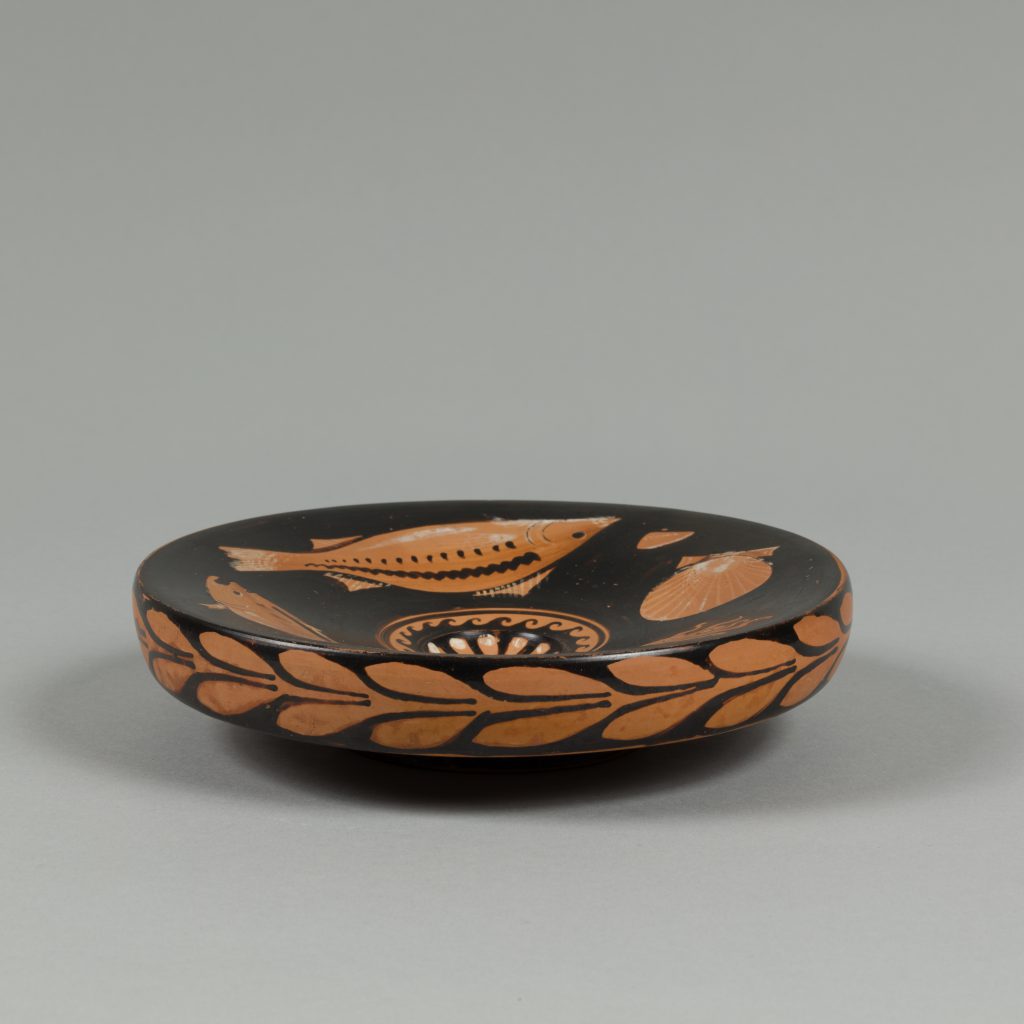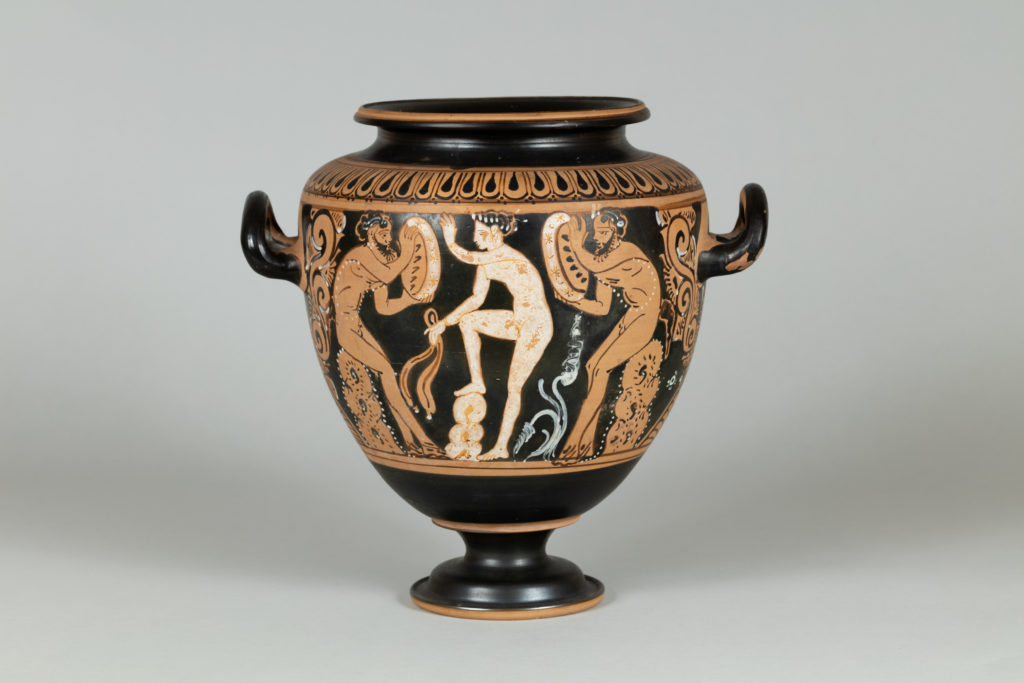
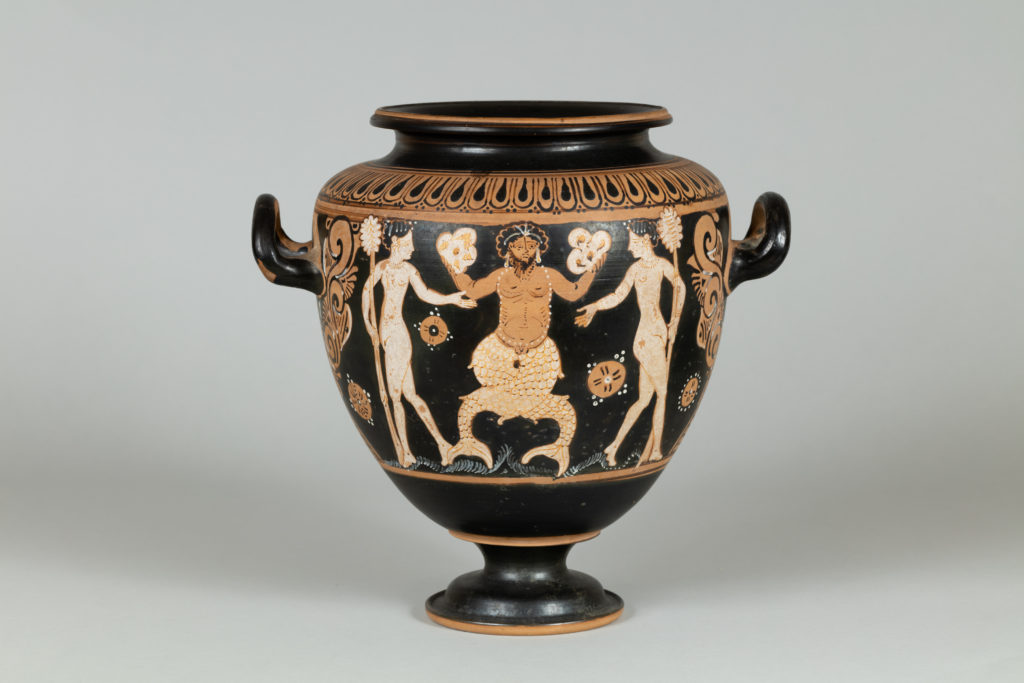
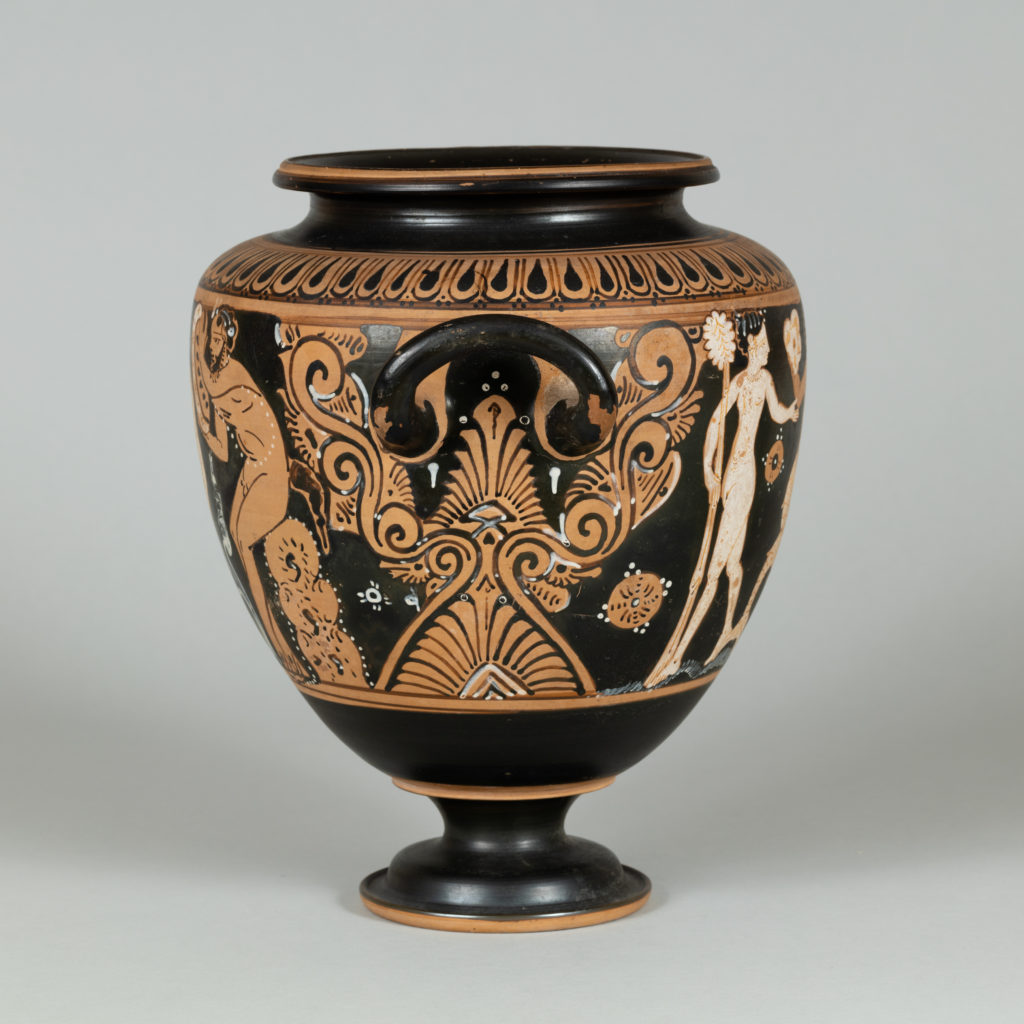
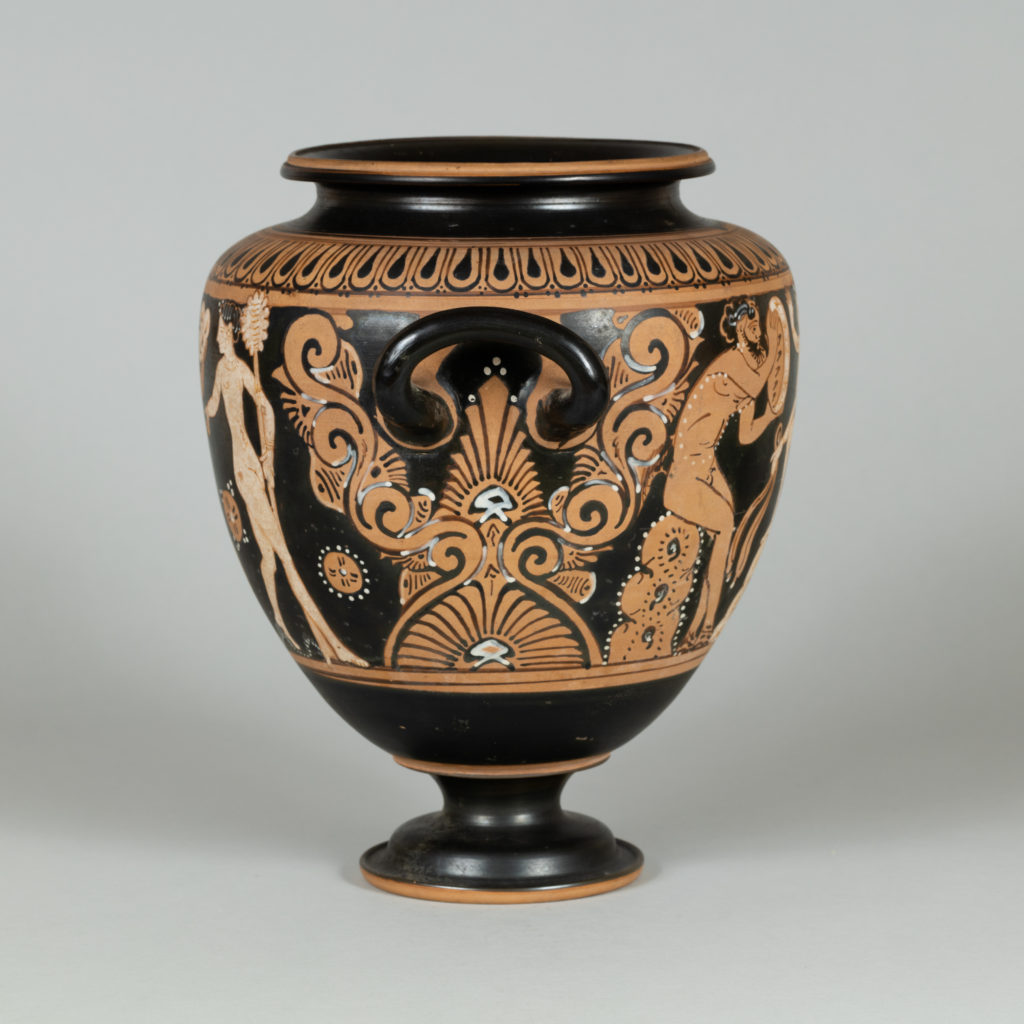
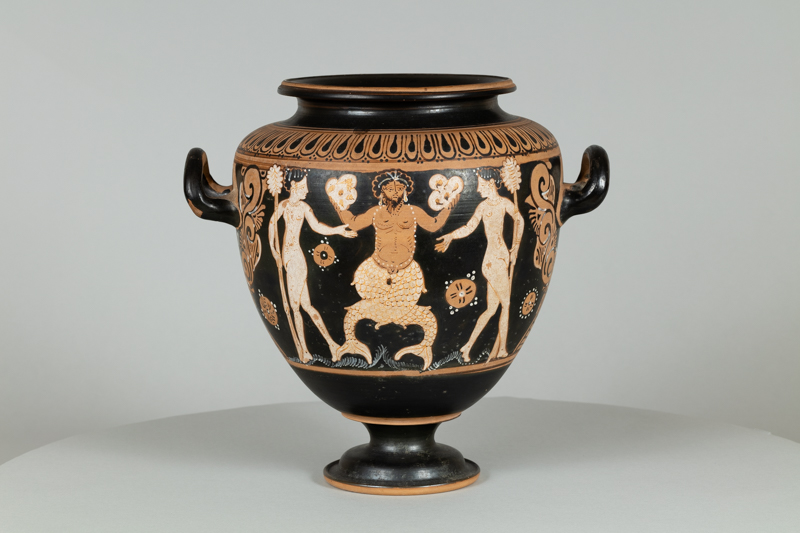

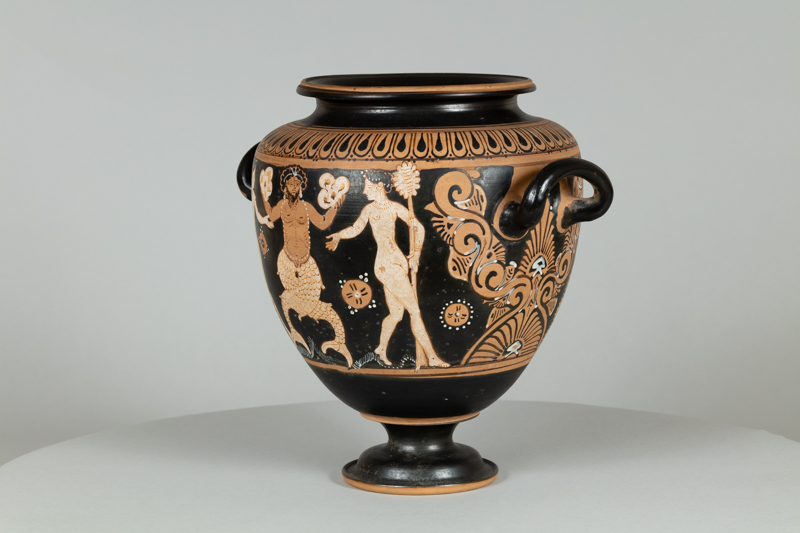
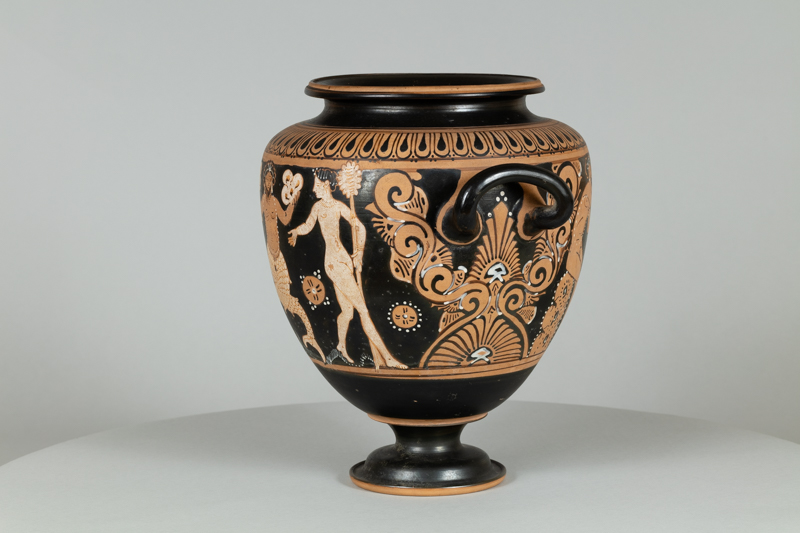

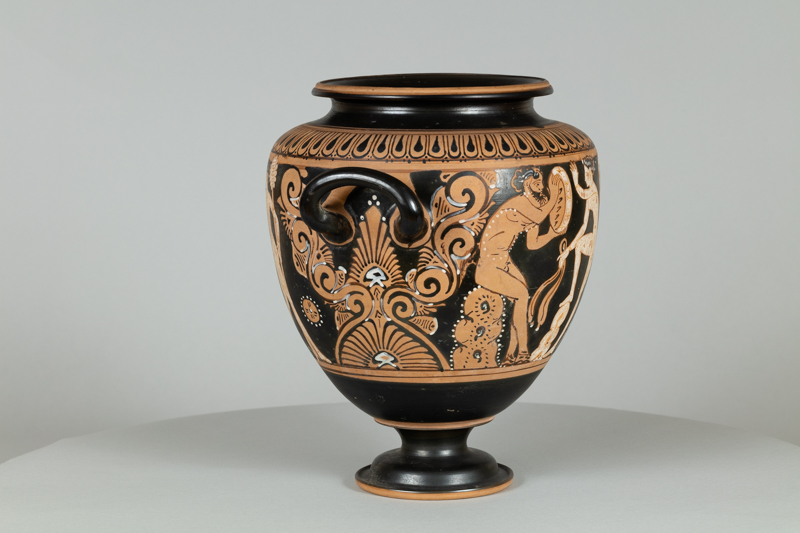
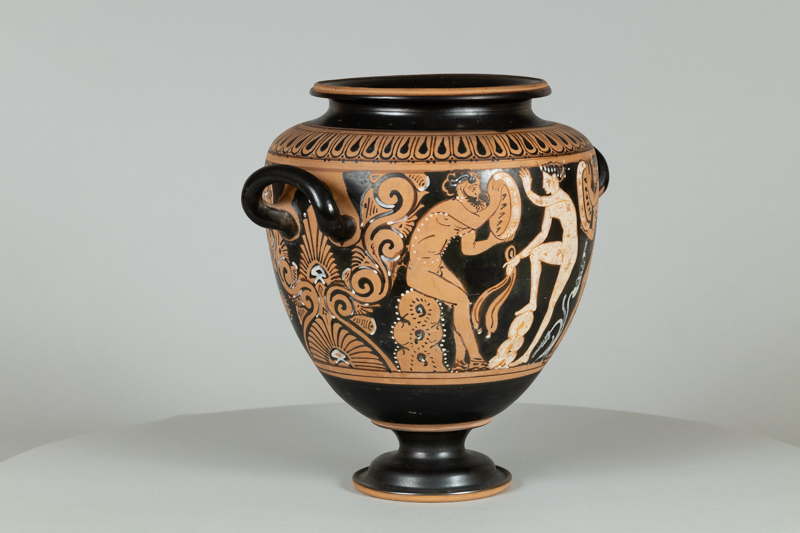



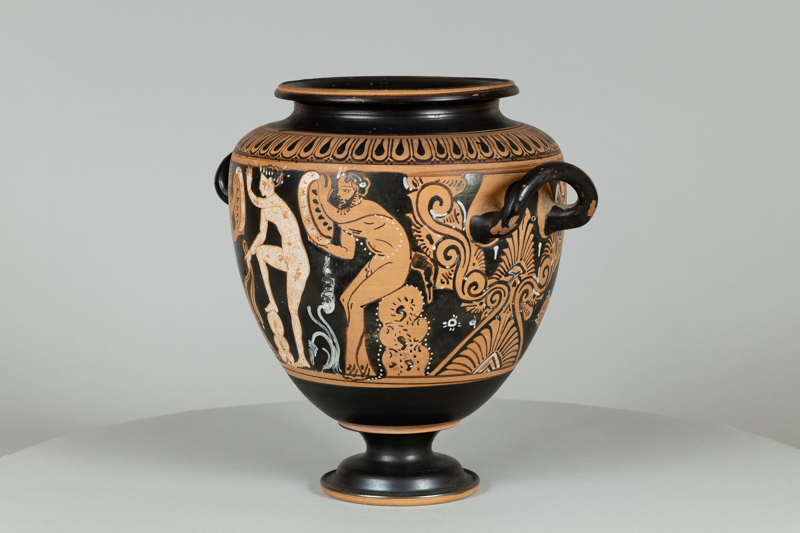
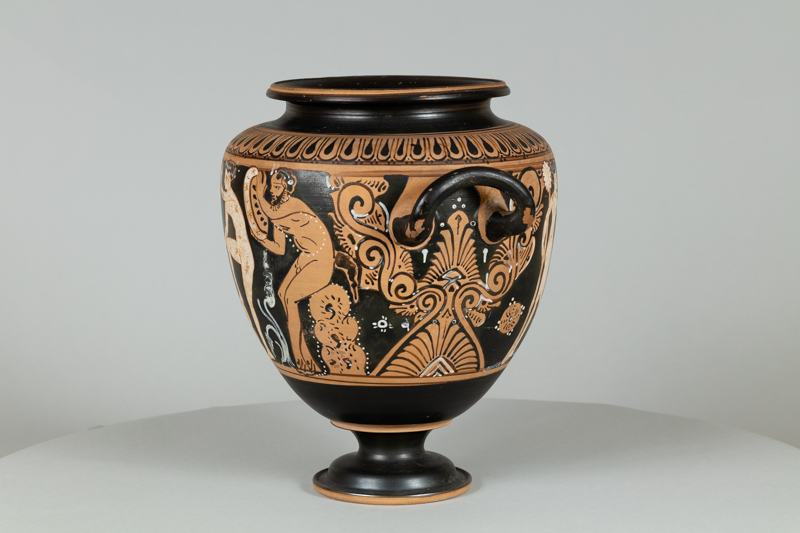
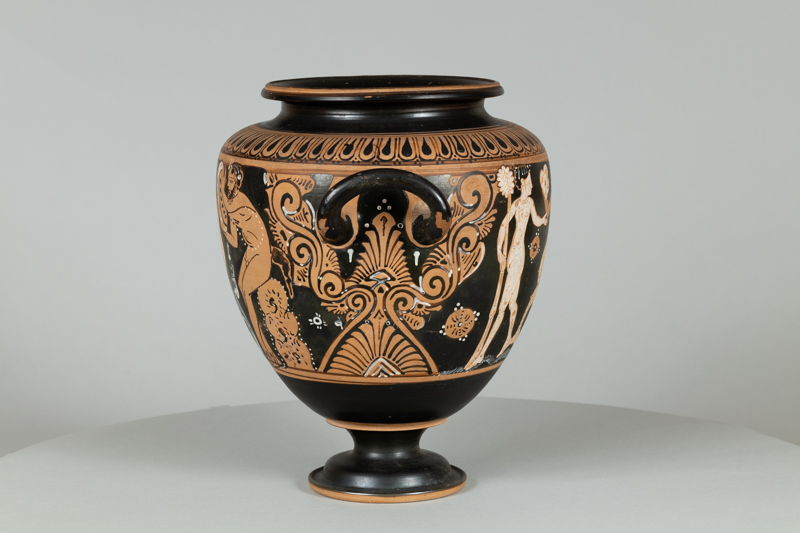
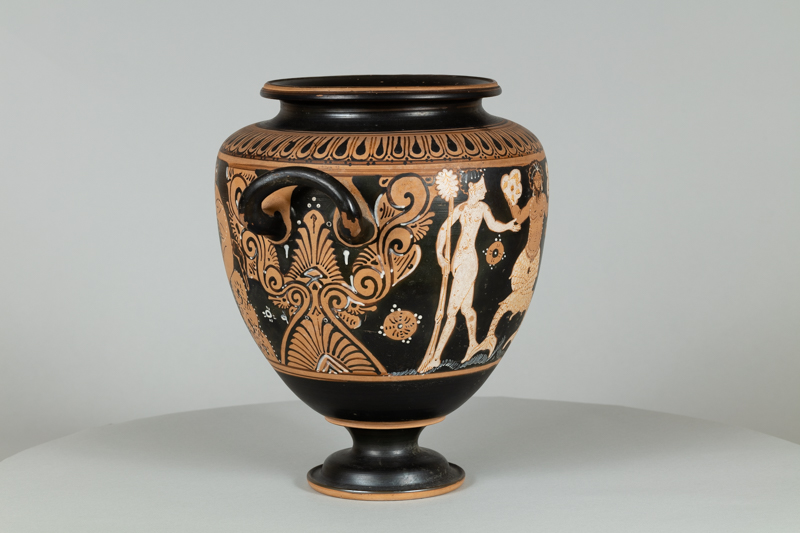

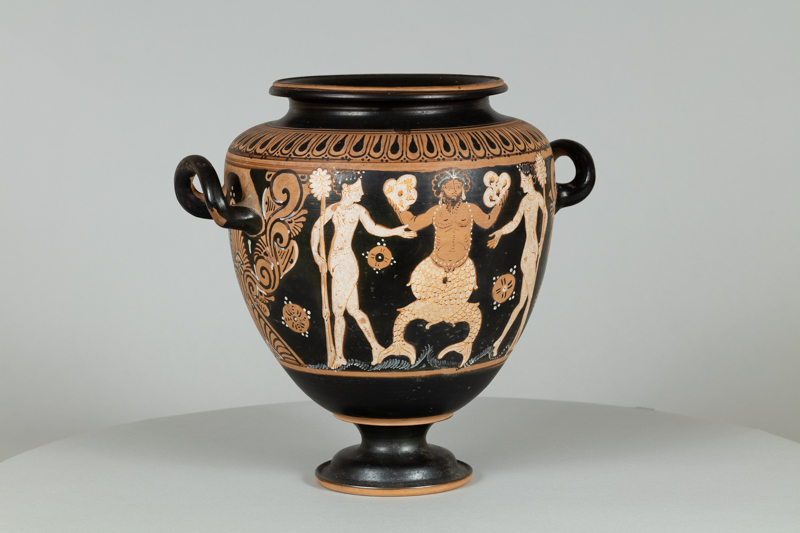
Gift of Edward Perry Warren, Esq., Honorary Degree 1926
1913.9The purpose of the stamnos would have been like that of the krater (vase) as the central vase in which wine was mixed with water prior to serving it to the all-male symposium guests. However, some stamnoi have been excavated with lids, implying that another possible use for this vessel type was as a container for symposium-related liquids. The stylized red-figure painting suggests this work could be Etruscan or perhaps Faliscan. Regardless, the stamnos serves as a reflection of the influence of Greek vase painting on the Italian Peninsula and represents an important category of ancient Mediterranean vessels that was essential to Edward Perry Warren’s construction of a comprehensive collection.
The vase depicts two mythological scenes separated by a fan-like, geometric motif that spans the length of the vessel and from which two scroll patterns emerge on either side of each handle. The central figure of the front is Triton, a half-man, half-fish sea god, who is flanked by two maenads, the female followers of the god of wine and theatre Dionysus. With one hand they gesture towards the sea god and in the other they hold a thyrsus, a type of decorative staff that identifies them as maenads. These figures rest atop a series of white wisps that, as a grouping, give the impression of waves lapping the groundline. On the rear is a maenad who hunches over with her right foot on top of a rock formation. She is framed by two satyrs: half-man, half-goat creatures and the male counterparts to the maenads as Dionysian attendants. Often linked to inebriation and joviality, the two satyrs are illustrated as music-makers as they strike their tympanon, an instrument like a tambourine or drum.
From the seventh century until the second century BCE, the Etruscans occupied much of present-day central Italy, known then as Etruria. The Falisci were primarily located in southern Etruria, and thus, they were culturally similar in many ways to the Etruscans who treasured Greek vases that demonstrated the exceptional artistic skill of Greek painters and potters. The proximity between Etruria and the Greek colonies in the south of Italy enabled the mass importation of these objects. The extent to which these vessels were valued by neighboring groups is also reflected in the Etruscan style that strove to emulate Greek painterliness. One differentiating component in the Etruscan or perhaps Faliscan approach is the embrace of white paint and lines and dots that are often thicker and brushier. As a work attributed to the Fluid Group, its style has been identified on several other vessels such as a similar terracotta stamnos housed in the Metropolitan Museum of Art.
Before 1913, collection of Edward Perry Warren; 1913, gifted to the Bowdoin College Museum of Art by Edward Perry Warren.
Collector
A testament to his impact as an influential twentieth-century American antiquities collector, Edward Perry Warren’s (1860–1928, H ’26) name is linked to hundreds of ancient objects housed in institutions across the United States, including more than five hundred works at the Bowdoin College Museum of Art alone.
